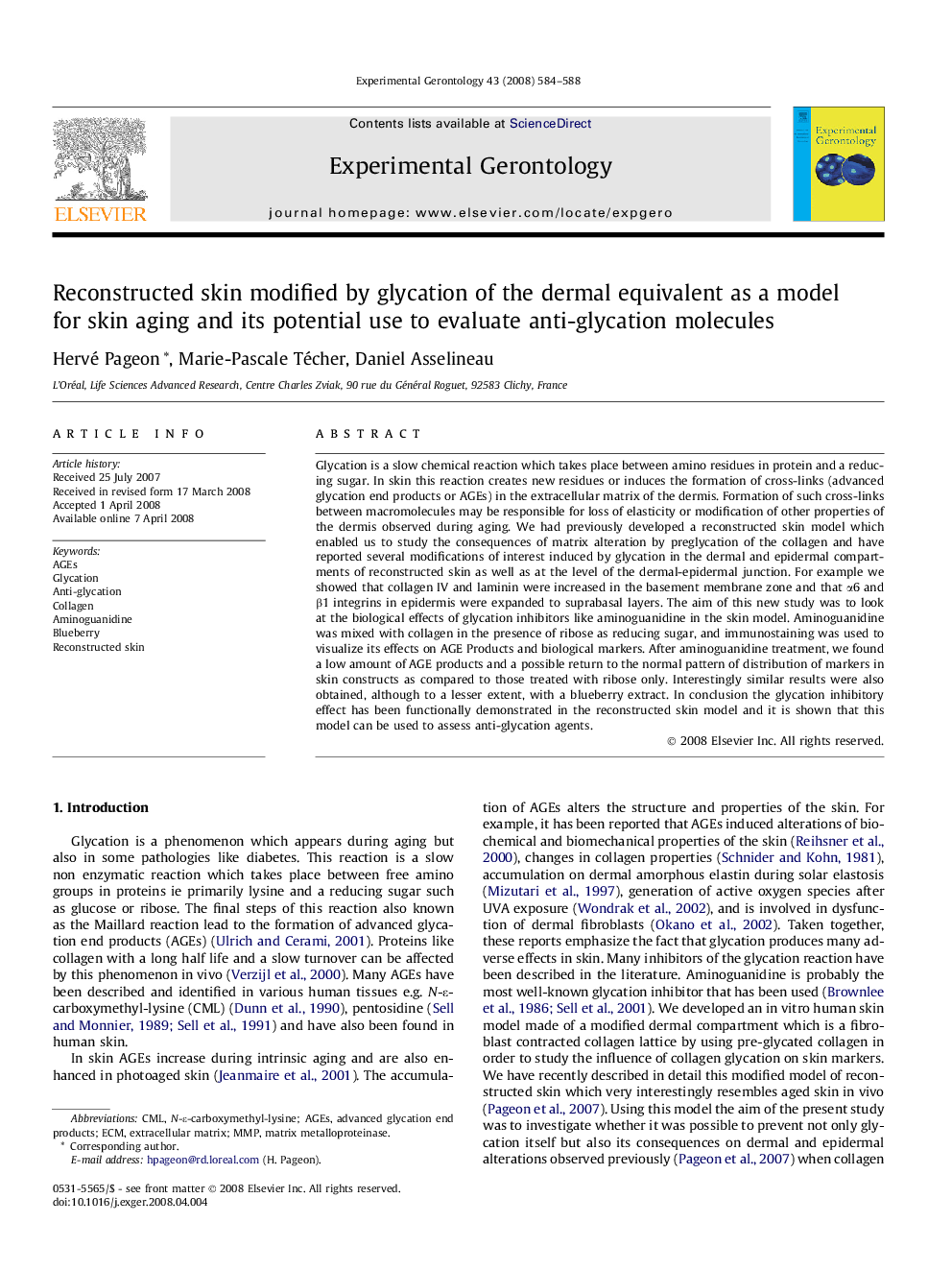| Article ID | Journal | Published Year | Pages | File Type |
|---|---|---|---|---|
| 1907513 | Experimental Gerontology | 2008 | 5 Pages |
Glycation is a slow chemical reaction which takes place between amino residues in protein and a reducing sugar. In skin this reaction creates new residues or induces the formation of cross-links (advanced glycation end products or AGEs) in the extracellular matrix of the dermis. Formation of such cross-links between macromolecules may be responsible for loss of elasticity or modification of other properties of the dermis observed during aging. We had previously developed a reconstructed skin model which enabled us to study the consequences of matrix alteration by preglycation of the collagen and have reported several modifications of interest induced by glycation in the dermal and epidermal compartments of reconstructed skin as well as at the level of the dermal-epidermal junction. For example we showed that collagen IV and laminin were increased in the basement membrane zone and that α6 and β1 integrins in epidermis were expanded to suprabasal layers. The aim of this new study was to look at the biological effects of glycation inhibitors like aminoguanidine in the skin model. Aminoguanidine was mixed with collagen in the presence of ribose as reducing sugar, and immunostaining was used to visualize its effects on AGE Products and biological markers. After aminoguanidine treatment, we found a low amount of AGE products and a possible return to the normal pattern of distribution of markers in skin constructs as compared to those treated with ribose only. Interestingly similar results were also obtained, although to a lesser extent, with a blueberry extract. In conclusion the glycation inhibitory effect has been functionally demonstrated in the reconstructed skin model and it is shown that this model can be used to assess anti-glycation agents.
